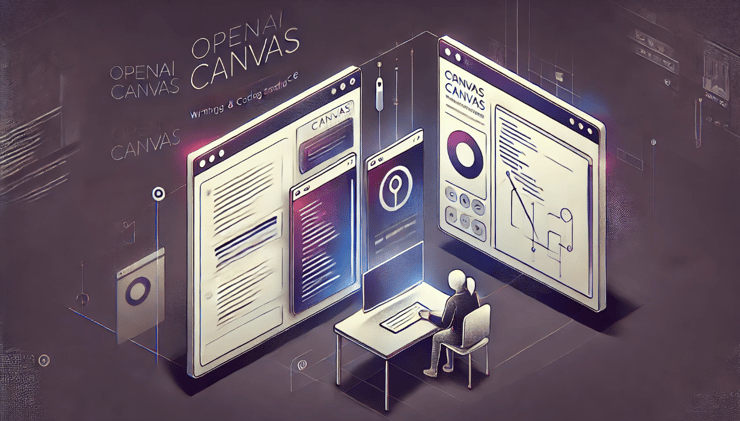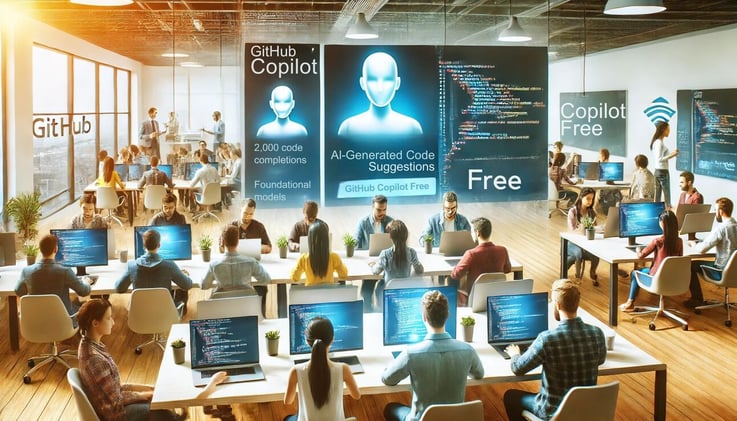OpenAI has introduced a new interface for ChatGPT called ‘Canvas,’ designed specifically for writing and coding projects. This new tool provides users with a separate workspace window alongside the regular chat interface, where they can generate, edit, and refine their work.
Editable Workspaces as a New Standard
OpenAI’s Canvas is part of a broader trend among consumer AI providers, who are converging around editable workspaces as a practical way to use generative AI. The new interface offers features similar to competitors like Anthropic’s Artifacts and the coding assistant Cursor. By offering more intuitive and flexible workspaces, OpenAI aims to grow its paid user base while keeping up with — and surpassing — competitor offerings.
Improving Collaboration with ChatGPT
Today’s AI chatbots aren’t able to complete large projects with a single prompt, but they can provide a good foundation for users to build on. Editable workspaces like Canvas make it easier to fix mistakes without regenerating entire sections. OpenAI Product Manager Daniel Levine explained that the Canvas interface offers a more natural way to collaborate with ChatGPT on projects.
How Canvas Works
In a demo with TechCrunch, users could select ‘GPT-4o with canvas’ from the model picker, though OpenAI indicated that Canvas windows will pop up automatically when ChatGPT detects a longer or more complex project. Alternatively, users can simply type ‘use canvas’ to open the project window.
For writing projects, Canvas offers features like adjusting the length of the text, rewriting sentences, and even translating the entire output into another language. For example, if users want to generate an email, they can highlight specific sentences and ask ChatGPT to make them friendlier, add emojis, or make other edits.
Writing with Canvas
- Adjusting Text Length: Users can adjust the length of the text generated by ChatGPT.
- Rewriting Sentences: Highlight specific sentences and ask ChatGPT to rewrite them for better clarity or tone.
- Translation: Translate the entire output into another language.
Coding with Canvas
The coding functionality in Canvas is slightly different from the writing tools. During the demo, Levine used Canvas to generate an API web server in Python. Users can click an ‘add comments’ button to insert in-line documentation explaining the code. Highlighting a section of code allows users to ask ChatGPT to explain it further or answer questions about it. Canvas also includes a ‘code review’ feature, which suggests specific edits to improve the code.
What This Means for Users
The introduction of Canvas marks a significant step in making AI-powered tools more interactive and useful for complex projects. By allowing users to generate and edit content directly in a separate workspace, Canvas makes it easier to collaborate with AI and refine outputs without having to re-prompt. As OpenAI continues to evolve its offerings, features like Canvas provide a more natural, efficient way for users to tackle writing and coding tasks, positioning ChatGPT as a valuable tool in both creative and technical workflows.
Expansion Beyond Beta
While Canvas is currently in beta for paid users, OpenAI plans to expand this feature to free users once the testing phase is complete, making it accessible to a broader audience. With Canvas, OpenAI aims to provide users with an even more seamless experience when working on writing and coding projects.
Conclusion
The introduction of Canvas by OpenAI highlights the growing trend towards editable workspaces in generative AI. By offering a natural way for users to collaborate with ChatGPT, OpenAI sets itself up as a leader in the field of consumer AI providers. As features like Canvas continue to improve and expand, they will provide users with an even more efficient and effective means of tackling complex writing and coding tasks.
With the introduction of Canvas, OpenAI has taken a significant step forward in providing users with the tools they need to effectively work with ChatGPT. By offering a natural way for users to collaborate with AI and refine outputs without having to re-prompt, Canvas provides an efficient way for users to tackle writing and coding tasks.
The future of generative AI looks bright, and OpenAI’s Canvas is just one step in making these tools more accessible and user-friendly. As the market continues to evolve, it will be interesting to see how other providers adapt to this trend towards editable workspaces.
OpenAI has made significant strides with its introduction of Canvas, a new interface for writing and coding projects. With features like adjustable text length, rewriting sentences, and translation capabilities, Canvas provides users with an even more intuitive way to collaborate with ChatGPT. The expansion of this feature to free users once the testing phase is complete will make it accessible to a broader audience.
References
1. TechCrunch (2023). OpenAI Launches ‘Canvas’ for Writing and Coding in ChatGPT.
2. OpenAI (2023). Introducing Canvas: A New Way to Work with ChatGPT.




